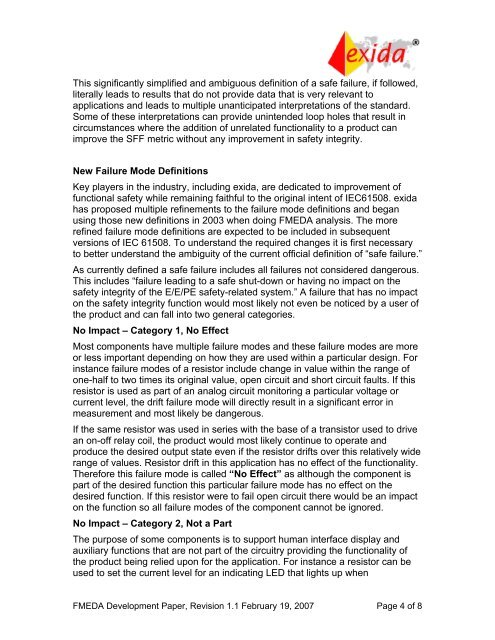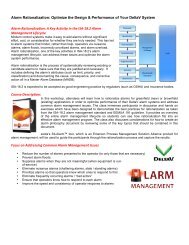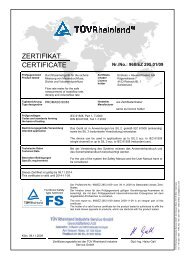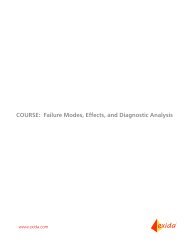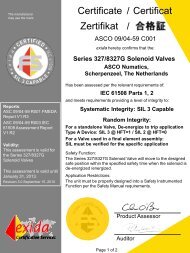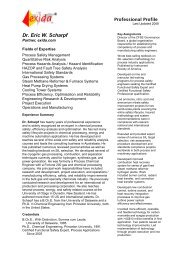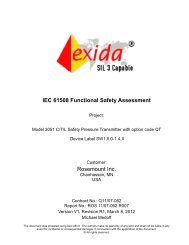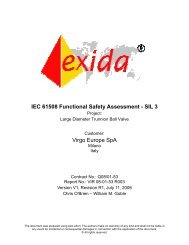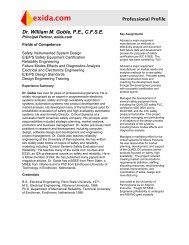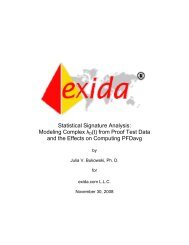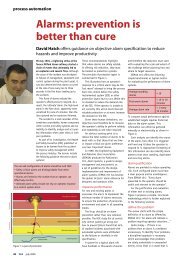FMEDA â Accurate Product Failure Metrics - Exida
FMEDA â Accurate Product Failure Metrics - Exida
FMEDA â Accurate Product Failure Metrics - Exida
- No tags were found...
You also want an ePaper? Increase the reach of your titles
YUMPU automatically turns print PDFs into web optimized ePapers that Google loves.
This significantly simplified and ambiguous definition of a safe failure, if followed,literally leads to results that do not provide data that is very relevant toapplications and leads to multiple unanticipated interpretations of the standard.Some of these interpretations can provide unintended loop holes that result incircumstances where the addition of unrelated functionality to a product canimprove the SFF metric without any improvement in safety integrity.New <strong>Failure</strong> Mode DefinitionsKey players in the industry, including exida, are dedicated to improvement offunctional safety while remaining faithful to the original intent of IEC61508. exidahas proposed multiple refinements to the failure mode definitions and beganusing those new definitions in 2003 when doing <strong>FMEDA</strong> analysis. The morerefined failure mode definitions are expected to be included in subsequentversions of IEC 61508. To understand the required changes it is first necessaryto better understand the ambiguity of the current official definition of “safe failure.”As currently defined a safe failure includes all failures not considered dangerous.This includes “failure leading to a safe shut-down or having no impact on thesafety integrity of the E/E/PE safety-related system.” A failure that has no impacton the safety integrity function would most likely not even be noticed by a user ofthe product and can fall into two general categories.No Impact – Category 1, No EffectMost components have multiple failure modes and these failure modes are moreor less important depending on how they are used within a particular design. Forinstance failure modes of a resistor include change in value within the range ofone-half to two times its original value, open circuit and short circuit faults. If thisresistor is used as part of an analog circuit monitoring a particular voltage orcurrent level, the drift failure mode will directly result in a significant error inmeasurement and most likely be dangerous.If the same resistor was used in series with the base of a transistor used to drivean on-off relay coil, the product would most likely continue to operate andproduce the desired output state even if the resistor drifts over this relatively widerange of values. Resistor drift in this application has no effect of the functionality.Therefore this failure mode is called “No Effect” as although the component ispart of the desired function this particular failure mode has no effect on thedesired function. If this resistor were to fail open circuit there would be an impacton the function so all failure modes of the component cannot be ignored.No Impact – Category 2, Not a PartThe purpose of some components is to support human interface display andauxiliary functions that are not part of the circuitry providing the functionality ofthe product being relied upon for the application. For instance a resistor can beused to set the current level for an indicating LED that lights up when<strong>FMEDA</strong> Development Paper, Revision 1.1 February 19, 2007 Page 4 of 8


